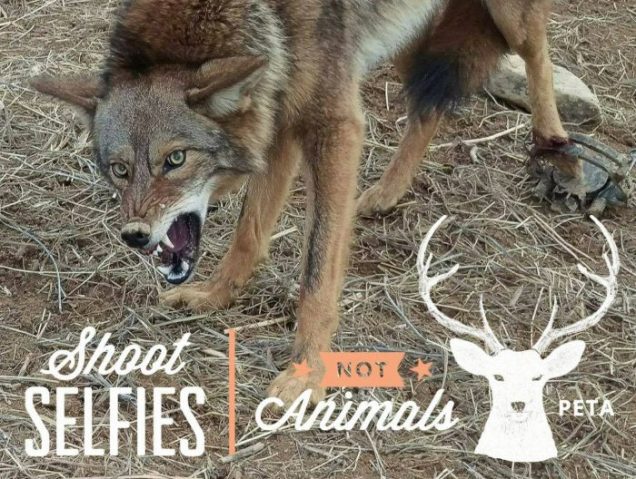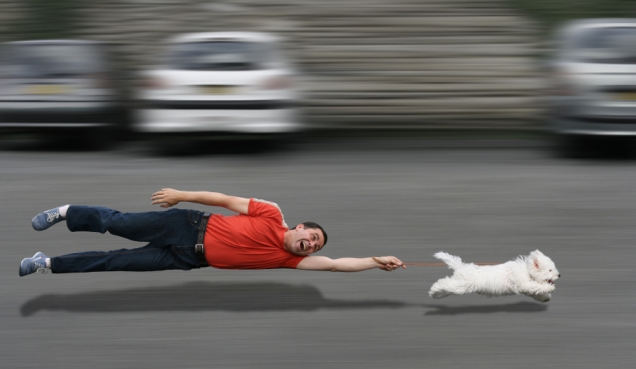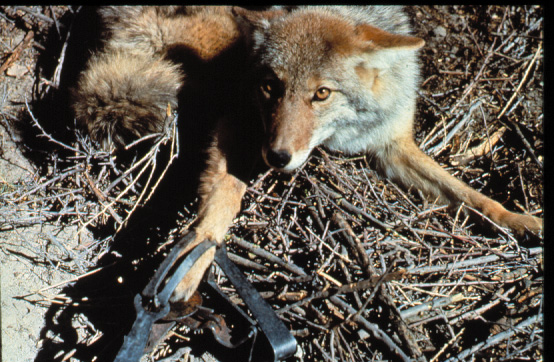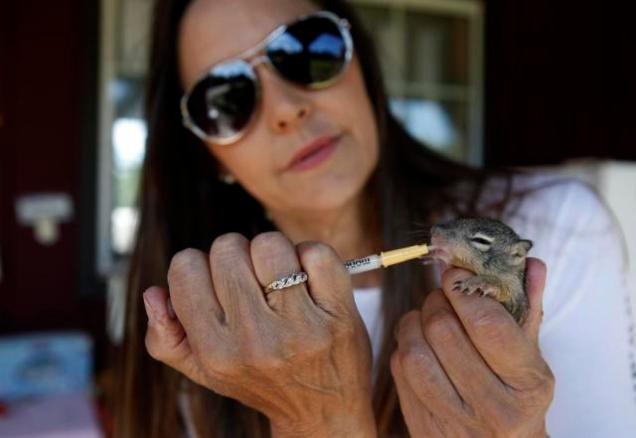The life of a Coyote, depending on where they are born and live will determine their length of survival. Currently, various data reflect that extended life expectancy in captivity is 18 plus years while those Coyotes living in the wilds may only survive about 8 perhaps 10 years with any luck. Captivity provides clean water and above average food sources which reduces stress for most animals. Health is not a matter of luck in captivity rather being monitored and treated as needs arise helps increase an animals longevity. One need only look at the difference in environments to understand why captive animals live longer, less stress. Notice I did not state complete loss of stress is obtained! Being caged is its own form of stress, mental stress can be and is measured in a captive environment. The one real thing that is missing for captive predators is adequate exercise, not only physically but mentally as well. It is the author’s contention that for predators, proper exercise (of both mind and body) is in the chase. Don’t forget that lying in hiding / wait is a form of exercise, being able to accelerate from a prone or sitting position is part and parcel to a predators need for exercise. A predator’s acquisition (chase) of breeding mates, food and shelter requires a lot of land! There are few if any listed zoo enclosures large enough to provide the proper exercise for any animal let alone predators! Yes, Coyotes born in captivity live longer then their wild kin but is that a life for a predator or is it just a day to day existence?
Through out these United States many states have extremely limited hunting seasons and just about every community prohibits discharging firearms with in their territorial limits. One community in Tennessee (according to the Greenfield Sun) has an ordinance in place that allows its citizens to shoot nuisance animals for agricultural purposes. Yep – that includes Coyotes. As a matter of fact, Tennessee does not restrict hunting Coyotes for all intents and purposes. To this author’s knowledge there are only a few states wherein unregulated hunting / trapping Coyotes is permitted year round.
It is said that nature seeks to fill a vacuum hence animals (Coyotes in particular) will have increased birth rates when food and shelter are readily available. In conjunction with that line of reasoning Coyotes are very plentiful these days in that there are so few large predators! A hundred years ago it wasn’t humans that hunted the Coyote, there were wolves, large cats and bears killing Coyotes. Yet no records are provided by experts that Coyote numbers increased when the larger predators killed off the Coyotes. Many experts report that Coyotes can adjust to external environmental (hunting) pressures and increase their birth capabilities as needed. Activist say that killing Coyotes is not the solution, it is just killing another defenseless animal for no reason. As was pointed out in the opening sentence, nature abhors a vacuum. This author sides with the experts that as Coyotes are killed off more breeding occurs with larger litter numbers. Typically, Coyotes have litters of 5 to 6 pups at a time when “nature is in balance.” Coyotes are fairly monogamous in times of a stable environment or periods when the land and food supports the existing population. However, during altered environments female Coyotes have been known to take new mates and breed more then once per season.
Sadly, in the past and with out any regulations some animals have been hunted into near extinction! Hunting animals into extinction is not good as it serves no purpose! Expanding a but here – this author firmly believes that well regulated hunting and or trapping of Coyotes will eventually lessen their numbers!
The side benefit to harvesting a few animals in a timely manner is that unlike attempts to restore Wolves, the Coyote’s genetic diversity will sustain good bloodlines well into the foreseeable future. Unfettered by confinement of a cage, the Coyote will continue to do what they do really well, survive. In the wild today there are no large predators threatening the Coyote but that environment is slowly dwindling, building a cage man never imagined. The Coyote has no problem thriving in a urban area because we humans make it easy fro them. It is up to each of us to decide whether or not we want the Coyote to be a new next door neighbor.
Stay tuned, there is more to come on the Coyote Cam

 This author disagrees with PETA on that stance! When wild animals start getting comfortable being around humans the relationship will end badly for both the humans and the wildlife!
This author disagrees with PETA on that stance! When wild animals start getting comfortable being around humans the relationship will end badly for both the humans and the wildlife!

 which are typically much heavier then their western kin. Speaking of Coyotes along the eastern seaboard, more and more Coyote encounters are being recorded. The common thinking there is that more and more subdivisions are encroaching into the wilds hence more encounters with Coyotes and other wild animals. Encroachment into wild life may not be avoided as more and more humans decide that the city life is not for them. Unfortunately, most city dwellers have the wrong perspective of living with or among wild life! Now about those selfies – cell phone or digital camera?
which are typically much heavier then their western kin. Speaking of Coyotes along the eastern seaboard, more and more Coyote encounters are being recorded. The common thinking there is that more and more subdivisions are encroaching into the wilds hence more encounters with Coyotes and other wild animals. Encroachment into wild life may not be avoided as more and more humans decide that the city life is not for them. Unfortunately, most city dwellers have the wrong perspective of living with or among wild life! Now about those selfies – cell phone or digital camera? but will leave the den 2 – 3 weeks later. It is about this time that Mom may decide to move the pups to a new location as the youngsters get more active. Coyotes are known to have several dens available in their territories so Mom has several to choose from. The Coyote families eventually dissolve with the young males leaving prior to the arrival of Mom and Dad’s next liter. Of curious note here is that some of the original litter’s female pups will hang around and help Mom with her next litter. These “babysitters” are really helpful bringing food to Mom and helping to move their new brothers and sisters during the first few months to avoid den parasites and predators. The pups are typically weaned at 5-6 weeks after birth. The pups accept regurgitated food from the parents at this time but will soon begin their hunting training by accompanying Mom & Dad along with any of the older pups from the previous litter. As soon as the youngest are getting about on their own and able to keep up with Mom & Dad the other older siblings began to leave the Alpha Core. The mortality for young Coyotes is close to 50 percent, most pups will never see their first birthday!
but will leave the den 2 – 3 weeks later. It is about this time that Mom may decide to move the pups to a new location as the youngsters get more active. Coyotes are known to have several dens available in their territories so Mom has several to choose from. The Coyote families eventually dissolve with the young males leaving prior to the arrival of Mom and Dad’s next liter. Of curious note here is that some of the original litter’s female pups will hang around and help Mom with her next litter. These “babysitters” are really helpful bringing food to Mom and helping to move their new brothers and sisters during the first few months to avoid den parasites and predators. The pups are typically weaned at 5-6 weeks after birth. The pups accept regurgitated food from the parents at this time but will soon begin their hunting training by accompanying Mom & Dad along with any of the older pups from the previous litter. As soon as the youngest are getting about on their own and able to keep up with Mom & Dad the other older siblings began to leave the Alpha Core. The mortality for young Coyotes is close to 50 percent, most pups will never see their first birthday! and have relatively small territories of 2 – 3 square miles but may range out to 40 square miles depending on conditions. The Coyotes mark their territories with urine, fecal matter and anal-sac secretions. With their territories marked and ownership established the Coyote family lives a somewhat undisturbed life. The now mature adults from previous litters are establishing their new territories or arguing for ownership from the current owners. This time of the year is full of Coyotes, mature pups expanding their territories and looking to strengthen their viability. The new males are going crazy trying to figure out what this mating thing is all about and at the same time hunting enough food to sustain life and limb. From now through the next few months Coyotes will be more active then during the early summer months, especially the males.
and have relatively small territories of 2 – 3 square miles but may range out to 40 square miles depending on conditions. The Coyotes mark their territories with urine, fecal matter and anal-sac secretions. With their territories marked and ownership established the Coyote family lives a somewhat undisturbed life. The now mature adults from previous litters are establishing their new territories or arguing for ownership from the current owners. This time of the year is full of Coyotes, mature pups expanding their territories and looking to strengthen their viability. The new males are going crazy trying to figure out what this mating thing is all about and at the same time hunting enough food to sustain life and limb. From now through the next few months Coyotes will be more active then during the early summer months, especially the males.







